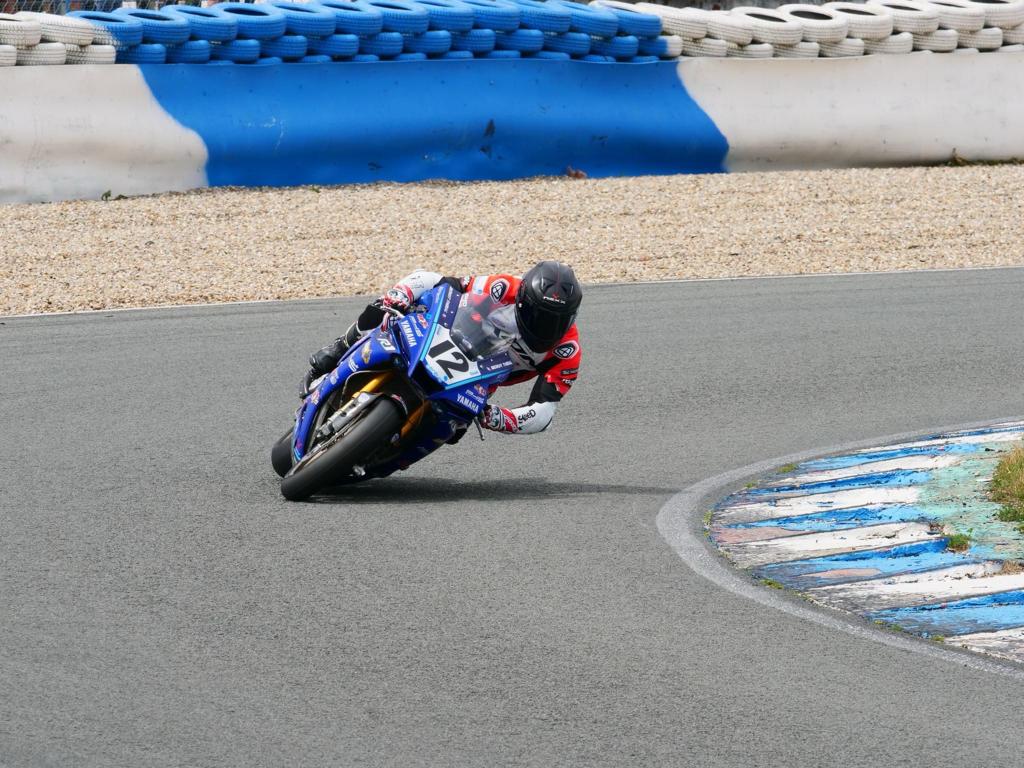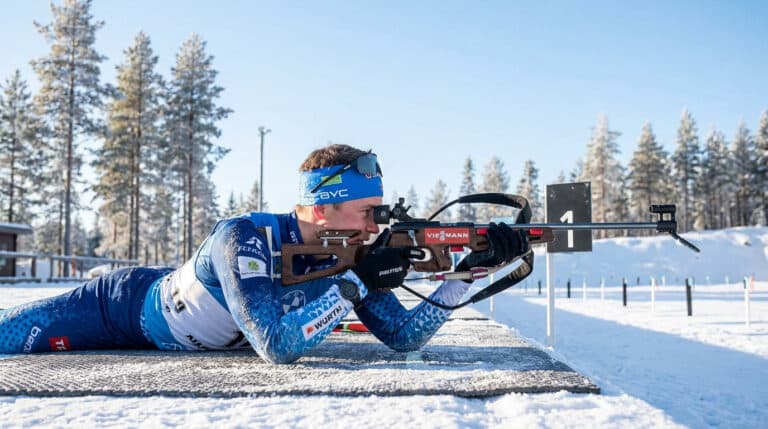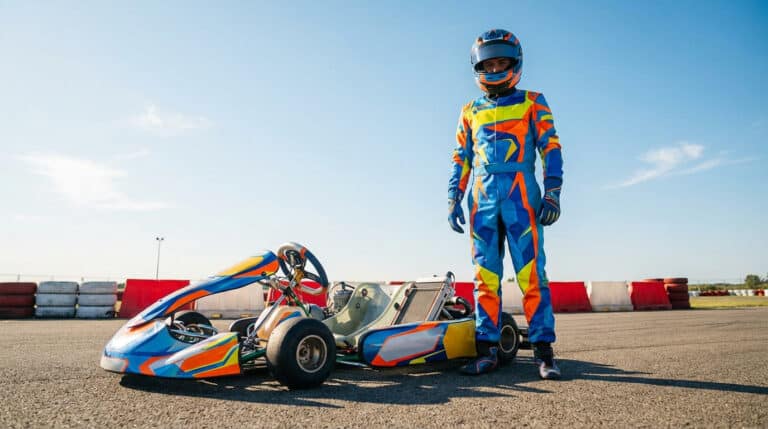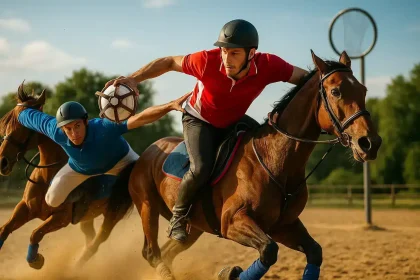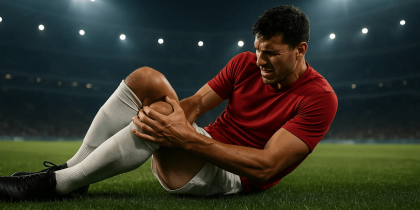Disability Sports and the Rise of Para-Athletes
Disability sports have moved from the margins to the centre of the sporting world, proving that performance, dedication, and athletic skill are not defined by physical ability alone. Across the UK and worldwide, stories of athlete disability highlight how para-athletes are rewriting the narrative of sports competition, showing that individuals with physical, intellectual, or sensory challenges can compete at the very highest levels.
In the United Kingdom, the success of Paralympic athletes has captured public imagination. Figures like David Weir, known as the “Weirwolf” of wheelchair racing, and Hannah Cockroft, a world record-holding wheelchair sprinter, have brought visibility to para-athletics on the global stage. Similarly, Ellie Simmonds, a multiple gold-medal-winning para-swimmer, and Jonnie Peacock, who became a Paralympic champion in the T44 100m sprint, have proven that disability sports can deliver not just participation but world-class performance. Their journeys highlight not only personal determination but also the role of sports federations, classification systems, and training support in creating opportunities for success.
Globally, inspirational athletes such as France’s Benoît Thibal demonstrate the diversity of pathways into disability sport. His career, which spanned motocross, para-motorcycling, skiing, and karting, illustrates how athletes with mobility disabilities can adapt and thrive. These examples resonate with countless disabled athletes in the UK who discover new disciplines—whether through grassroots wheelchair basketball clubs, para-swimming programmes, or national athletics trials—and go on to compete at international levels.
The rise of para-sports has had a profound cultural impact. By appearing in the media, dominating headlines during the Paralympic Games, and inspiring younger generations in schools and clubs, para-athletes have become role models not just for people with disabilities, but for all who value resilience and achievement. In doing so, they have contributed to the legacy of inclusivity that continues to define modern sport.
Understanding Classification in Disability Sport
One of the most important concepts in disability sports is the classification system. This system is designed to ensure fairness, so that athletes compete against others with similar functional abilities rather than being limited by their disabilities. Without classification, results would be meaningless, as competitors with very different capabilities would be compared directly.
The International Paralympic Committee (IPC) oversees the official classification rules used at the Paralympic Games and across international events. Athletes are evaluated by trained classifiers—medical and technical experts—who assess mobility, strength, coordination, and vision. Based on these evaluations, athletes are placed into classes that determine eligibility and groupings for competition.
Categories of Impairments
- Physical: including limb deficiencies from amputation, impaired muscle power, reduced range of movement, hypertonia (muscle tension), athetosis (uncontrolled movements), or ataxia (coordination problems).
- Vision: athletes with partial sight, tunnel vision, or total blindness, often competing with guide runners or tandem cycling partners.
- Intellectual: athletes with measurable cognitive limitations that affect sport-specific skills like strategy, reaction time, or motor coordination.
Examples Across Sports
- In para-athletics, the classification codes begin with T (track) or F (field). For example, T11–T13 are for vision-impaired runners, T20 for intellectual disabilities, and T30–T38 for athletes with cerebral palsy. Athletes with limb deficiencies fall into T/F 40–46, while those with more complex disabilities are grouped into other ranges.
- In para-swimming, athletes are grouped into classes S1–S14. Lower numbers (S1–S5) represent athletes with severe impairments, while higher numbers (S10–S14) represent athletes with milder disabilities or intellectual disabilities.
- In wheelchair basketball, players are assigned points (1.0–4.5) based on functional mobility. A team cannot exceed 14 points across five players on court, ensuring that players with severe difficulties are balanced fairly with those with less restriction.
- In para-cycling, categories range from C1–C5 (standard bikes for athletes with minor disabilities) to H1–H5 (handcycles for those with more severe mobility disabilities) and B (tandem bikes for athletes with vision disabilities).
This level of detail ensures that an amputee sprinter is not competing against a vision-impaired runner, and that fairness remains central to the sport. Classification is constantly evolving, with federations updating criteria to reflect medical research, new technologies, and the practical needs of disabled athletes.
Organisations Governing Disability Sports
The governance of disability sports involves a network of international committees, national federations, and grassroots organisations. Each plays a role in ensuring that athletes with disabilities have the chance to train, compete, and progress through clear pathways.
At the top, the International Paralympic Committee (IPC) sets global standards. Based in Bonn, Germany, it oversees the Paralympic Games, manages the classification code, and regulates numerous para-sports. Its authority ensures that competitions remain consistent across countries and continents.
In the UK, the British Paralympic Association (BPA) coordinates Team GB’s Paralympic athletes, supporting everything from logistics and coaching to athlete welfare. Alongside this, UK Sport and Sport England provide funding for elite performance and grassroots programmes.
Each sport has its own international federation, such as the International Wheelchair Basketball Federation (IWBF) or World Para Swimming. These federations develop sport-specific rules, manage world rankings, and organise international competitions. At the national level, UK Athletics, British Swimming, and the British Wheelchair Basketball Association manage athlete development and domestic competitions.
Finally, community organisations and charities are vital. Groups like Activity Alliance, Cerebral Palsy Sport, and Disability Rights UK promote inclusive participation, ensuring that children and adults with disabilities can access sport at every level. These bodies not only create opportunities but also advocate for accessibility, funding, and equal rights in sport.
A Brief History of the Paralympic Movement
The modern history of disability sports is deeply tied to the origins of the Paralympic Games. In 1948, Dr Ludwig Guttmann organised a small archery competition for World War II veterans with spinal injuries at Stoke Mandeville Hospital in England. This event, known as the Stoke Mandeville Games, coincided with the London Olympics and became the foundation of the Paralympic movement.
By 1960, the first official Paralympic Games were held in Rome, with over 400 athletes from 23 countries. The Games have since grown exponentially. The Tokyo 2020 Paralympics featured over 4,000 athletes from more than 160 nations, competing across 22 sports. The Winter Paralympics, introduced in 1976, added skiing, ice hockey, and snowboarding to the programme.
The UK has played a central role in this history. As the birthplace of the Paralympic movement, Britain continues to be a leader in both grassroots para-sport development and international competition. Hosting the London 2012 Paralympic Games was a watershed moment, with record-breaking attendance and unprecedented media coverage. For the first time, para-sport captured mainstream attention on the same scale as the Olympics.
The Paralympics today symbolise more than competition. They represent inclusivity, resilience, and global cooperation. The Games highlight athletes with disabilities not as exceptions but as integral figures in the sporting world.
Types of Disability Sports
One of the defining strengths of disability sports is the sheer variety of disciplines available to athletes. These sports allow individuals with different impairments to find the right environment for competition and participation.
Summer Para-Sports
- Para-athletics: Covering track sprints, middle and long-distance events, throwing disciplines like discus and javelin, and field events such as long jump.
- Para-swimming: All standard strokes are included, with classifications ensuring fairness between athletes with different disabilities.
- Wheelchair basketball: A fast-paced and tactical team sport, with thriving leagues in the UK.
- Football 5-a-side: Played by athletes with vision impairments, using a ball with a noise-making device for orientation.
- Cycling and handcycling: Featuring road and track events for athletes with limb disabilities, spinal injuries, or vision impairments.
- Powerlifting: A test of pure upper-body strength, with athletes competing in the bench press.
- Archery, judo, table tennis, shooting, boccia: Offering opportunities across a wide range of skills and abilities.
Winter Para-Sports
- Para-alpine skiing: Including downhill, slalom, and super-G, adapted for athletes with vision or limb impairments.
- Para-nordic skiing: Covering cross-country races and biathlon, a combination of skiing and shooting.
- Para-snowboarding: Fast-paced and thrilling, with athletes competing in boardercross and slalom events.
- Para-ice hockey (sledge hockey): A Paralympic highlight, offering a physical and tactical team sport.
Outside the Paralympic Games, popular disciplines include wheelchair rugby, para-rowing, sitting volleyball, goalball, and cerebral palsy football. These options create inclusive opportunities for athletes with different impairments to engage in sport at both recreational and competitive levels.
Inclusivity and Access to Sports
Inclusivity is one of the pillars of disability sports. The movement is not only about creating opportunities at elite levels but also about ensuring that children, young people, and adults with disabilities can access physical activity as part of everyday life.
In the UK, initiatives like inclusive PE lessons in schools, local wheelchair basketball leagues, and para-swimming sessions have become vital pathways. These programmes introduce young athletes to sport early, ensuring that talent is identified and nurtured.
Accessibility goes beyond facilities. It also involves addressing financial barriers, providing affordable equipment, and offering accessible venues. National organisations like UK Sport, Sport England, and the British Paralympic Association work with local councils, charities, and schools to ensure that inclusivity is embedded in the sporting system.
At the elite level, inclusivity means ensuring equal access to funding, coaching, and media exposure. The increased visibility of para-athletes in the media and sports magazines helps to change perceptions, showing that disability sports are competitive, exciting, and worthy of global attention.
Resources and Support for Athletes with Disabilities
To succeed in para-sport, athletes require comprehensive support beyond training alone. This includes:
- Medical and rehabilitation care: Access to physiotherapy, sports doctors, and injury recovery services tailored to athletes with disabilities.
- Specialist coaching: Training from coaches with expertise in disability sport, who understand the nuances of classification, impairment types, and adaptive techniques.
- Adaptive equipment: From racing wheelchairs and running blades to tandem bicycles and swimming aids, equipment is crucial for performance.
- Funding and sponsorship: Grants from federations, corporate sponsorships, and government support provide financial stability.
- Insurance cover: Protection against accidents, injuries, and disability ensures peace of mind for athletes and their families.
By combining these resources, athletes can move from grassroots clubs to national championships, world events, and ultimately the Paralympics. The UK’s strong support structure has been key to its success at recent Games.
Insurance for Disability Sports Athletes
While disability sports promote resilience and strength, the risks are real. High-impact sports like para-cycling, alpine skiing, or powerlifting carry dangers ranging from fractures to long-term impairments. This is where sports insurance becomes essential.
Insurance can cover:
- Medical expenses after accidents (hospital stays, operations, consultations).
- Rehabilitation and physiotherapy costs.
- Emergency transport and repatriation during international competitions.
- Compensation for long-term disability or loss of earnings.
At Assure Ton Sport, we provide tailored insurance for disabled athletes in the UK and Europe. From grassroots competitors to Paralympic champions, our policies cover training sessions, local competitions, and international championships. With protection in place, athletes can concentrate fully on performance, knowing that both their health and their future are safeguarded.
The Future of Disability Sports
The future of disability sports is bright and ambitious. Advances in technology—from carbon-fibre prosthetics and lightweight racing wheelchairs to advanced swimming aids—are pushing performance further than ever. These innovations, combined with more inclusive policies, mean that new records are being set at every Paralympic Games.
Media coverage has also expanded dramatically. The London 2012 Paralympics marked a turning point, with major broadcasters covering para-sports at unprecedented levels. Since then, the visibility of para-athletes has grown, leading to increased sponsorship deals, commercial opportunities, and wider recognition.
Grassroots development continues to be a priority. Programmes that bring children with disabilities into sport from an early age will create the next generation of champions. Meanwhile, international cooperation between federations ensures that disability sports remain accessible worldwide.
Inclusivity is no longer just a goal—it is becoming a standard. With more resources, better funding, and ongoing advocacy, disability sports are set to expand their influence both on and off the field of play.
Disability Sports in the United Kingdom: National Programmes and Local Impact
The United Kingdom has been at the heart of the global disability sports movement since the creation of the Stoke Mandeville Games. Today, the UK remains a world leader in promoting para-athletics, para-swimming, wheelchair basketball, and intellectual disability sports, with a strong emphasis on community engagement and inclusivity.
At the grassroots level, initiatives run by Sport England and Activity Alliance ensure that people with physical, intellectual, and sensory disabilities can access sport. Programmes such as Every Body Moves provide practical opportunities for disabled people to join clubs, attend fitness sessions, or try sports such as wheelchair rugby, sitting volleyball, and goalball. These initiatives highlight that disability sport is not only about elite performance but also about improving health, confidence, and social inclusion for thousands of people.
Nationally, the British Paralympic Association (BPA) works alongside organisations like UK Athletics, British Swimming, and the British Wheelchair Basketball Association to identify and develop future talent. Local leagues in wheelchair basketball, cerebral palsy football, and para-athletics give athletes the competitive experience they need to progress to national championships. These leagues also provide role models, showing younger generations of disabled athletes that performance at international events like the Paralympic Games is within reach.
The UK is also home to world-class facilities such as the English Institute of Sport in Sheffield and the National Cycling Centre in Manchester. Both are used by para-athletes for training and classification assessments, demonstrating how mainstream sporting infrastructure can be fully inclusive. Regional hubs, from London to Glasgow, ensure that opportunities are spread across the country, reducing geographical barriers to participation.
Importantly, disability sport in the UK is supported by government funding, lottery grants, and corporate sponsorship, which allow athletes to focus on training without the constant worry of financial instability. This investment has helped Team GB Paralympians consistently rank among the top nations in the medal tables at both Summer and Winter Paralympic Games, reinforcing the UK’s reputation as a global leader in disability sports.
Finally, the impact of these programmes goes beyond medals. Disability sports in the UK encourage wider participation in schools, universities, and community centres, fostering an inclusive culture where sport is seen as a right for everyone, regardless of impairment. By combining grassroots access, elite pathways, and international competition, the UK continues to build a system where para-sport is a source of pride, opportunity, and performance excellence.
Disability Sports as a Global Movement
From classification systems and federation governance to inspiring athlete stories and advanced technology, disability sports are now a fundamental part of the global sporting landscape. The Paralympic Games stand as a symbol of equality and performance, reminding us that athletes with disabilities deserve the same recognition as any other competitor.
For athletes in the UK, Europe, and beyond, success depends on training, classification, access, and protection. With organisations, federations, and insurance providers working together, para-sports will continue to thrive.
With Assure Ton Sport, the UK’s trusted leader in specialist sports insurance, every para-athlete can compete with confidence—knowing that they are protected at every stage, from grassroots competition to the world stage of the Paralympics.
